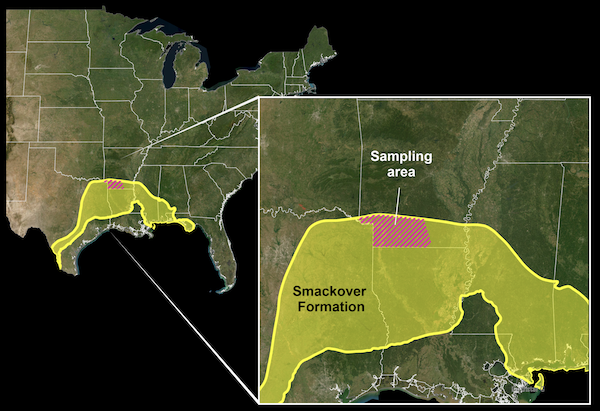USGS hydrologist Dr. Katherine Knierim stated, “We estimate there is enough dissolved lithium present in that region to replace U.S. imports of lithium and more.”
A recent study led by the United States Geological Survey (USGS) has revealed that there may be sufficient lithium in an ancient seabed beneath southwest Arkansas to exceed the projected 2030 global demand for lithium in car batteries by nine times. The study, conducted in collaboration with the Arkansas Department of Energy and Environment’s Office of the State Geologist, utilized water testing and machine learning techniques to determine that the Smackover Formation, a porous limestone seabed spanning parts of Arkansas, Louisiana, Texas, Alabama, Mississippi, and Florida, contains between 5 and 19 metric tons of lithium.
USGS Director David Applegate highlighted the significance of lithium as a critical mineral for the energy transition and emphasized the potential for increased U.S. production to replace imports, which could have implications for employment, manufacturing, and supply-chain resilience.
The study’s findings have more than doubled previous estimates of lithium reserves in the United States, which were believed to be around 14 million metric tons across various deposits in states such as North Carolina, California, and Nevada.
Lithium, often referred to as “white gold,” plays a vital role in the production of rechargeable batteries used in electric vehicles, solar panels, and other modern technologies like cell phones and laptops. The global demand for lithium is expected to increase significantly in the coming years, with projections indicating a sixfold rise between 2020 and 2030, followed by additional growth in subsequent decades.
Despite the United States currently producing only 1 percent of the global lithium supply, the potential for domestic lithium extraction presents an opportunity to reduce reliance on imports. China currently dominates the market for critical minerals like lithium, with more than a quarter of lithium used in the U.S. being imported.
Dr. Katherine Knierim cautioned that while there is a substantial amount of dissolved lithium in the region, further assessments are needed to determine the technical feasibility of extraction using advanced methods.
The study’s low-end estimate of 5 million tons of lithium in Smackover brines far exceeds the International Energy Agency’s projections for lithium demand in the electric vehicle sector by 2030.
Samples from Arkansas were analyzed using advanced laboratory techniques, and a machine learning model was employed to predict total lithium concentrations across the region, even in areas where direct sampling was not possible.
The commercial viability of the lithium deposit in Arkansas will depend on the development of technologies like direct lithium extraction (DLE), which offer a more efficient and environmentally friendly alternative to traditional extraction methods. However, challenges such as cost, scalability, and environmental impact need to be addressed before DLE can become a major player in the lithium market.
Several oil companies are already active in the Smackover Formation, extracting lithium from brines as part of their operations. ExxonMobil and Equinor are among the companies investing in lithium extraction projects in the region, aiming to refine DLE processes and contribute to the growth of the domestic lithium industry. Please rephrase this sentence.
Source link





